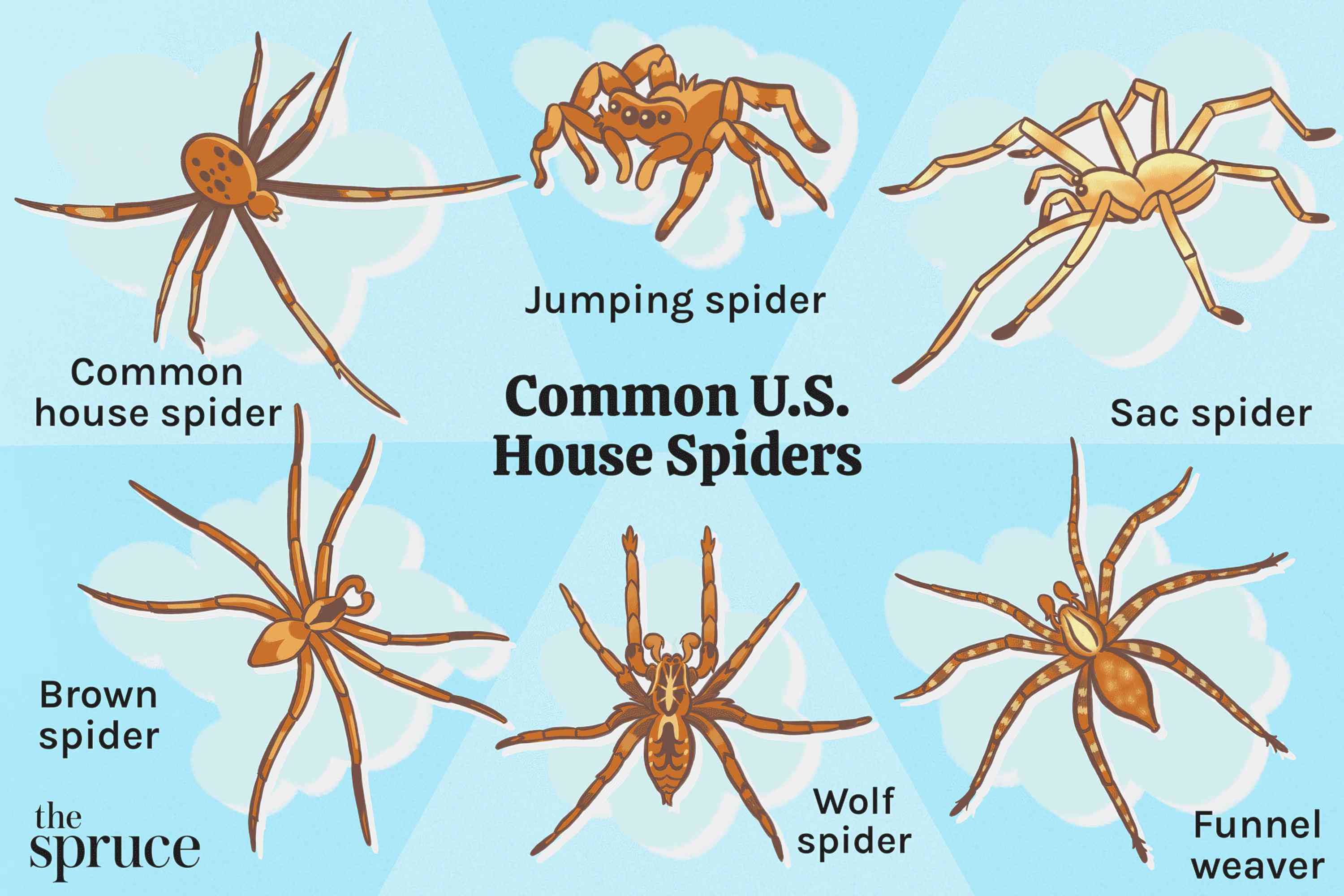
Welcome to our exploration of the most common house spiders found in North America. House spiders are an integral part of our ecosystem, helping to control other pest populations.These eight-legged creatures, while often feared, play a crucial role in controlling pest populations. Let’s dive into the fascinating world of house spiders and learn more about their habits, appearance, and impact on our homes.
While most are harmless, it’s essential to be aware of the few that can pose health risks. Understanding these common house spiders can help you coexist peacefully with these fascinating creatures.
Here is a detailed overview of some of the most common spiders found in American homes:
American House Spider
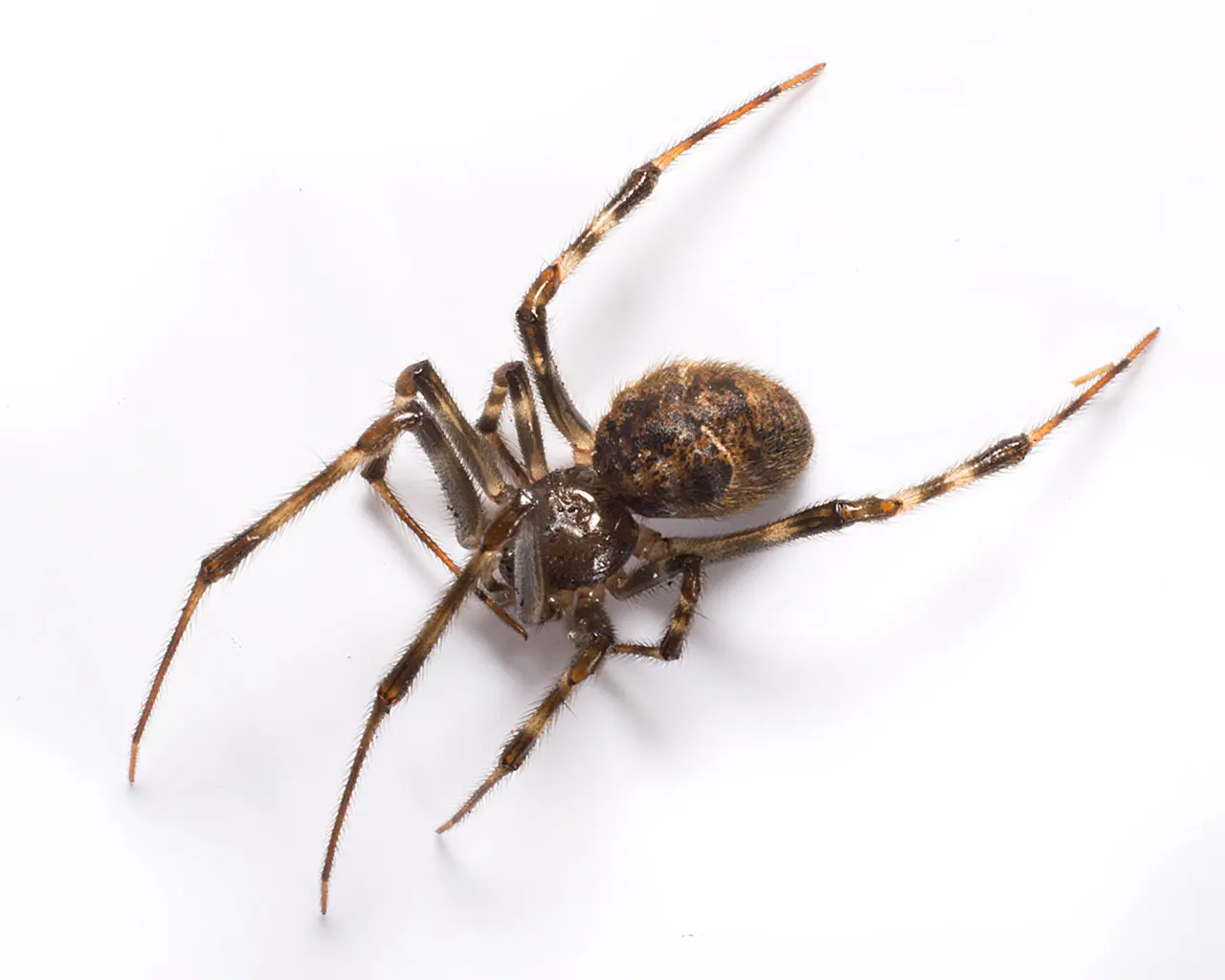
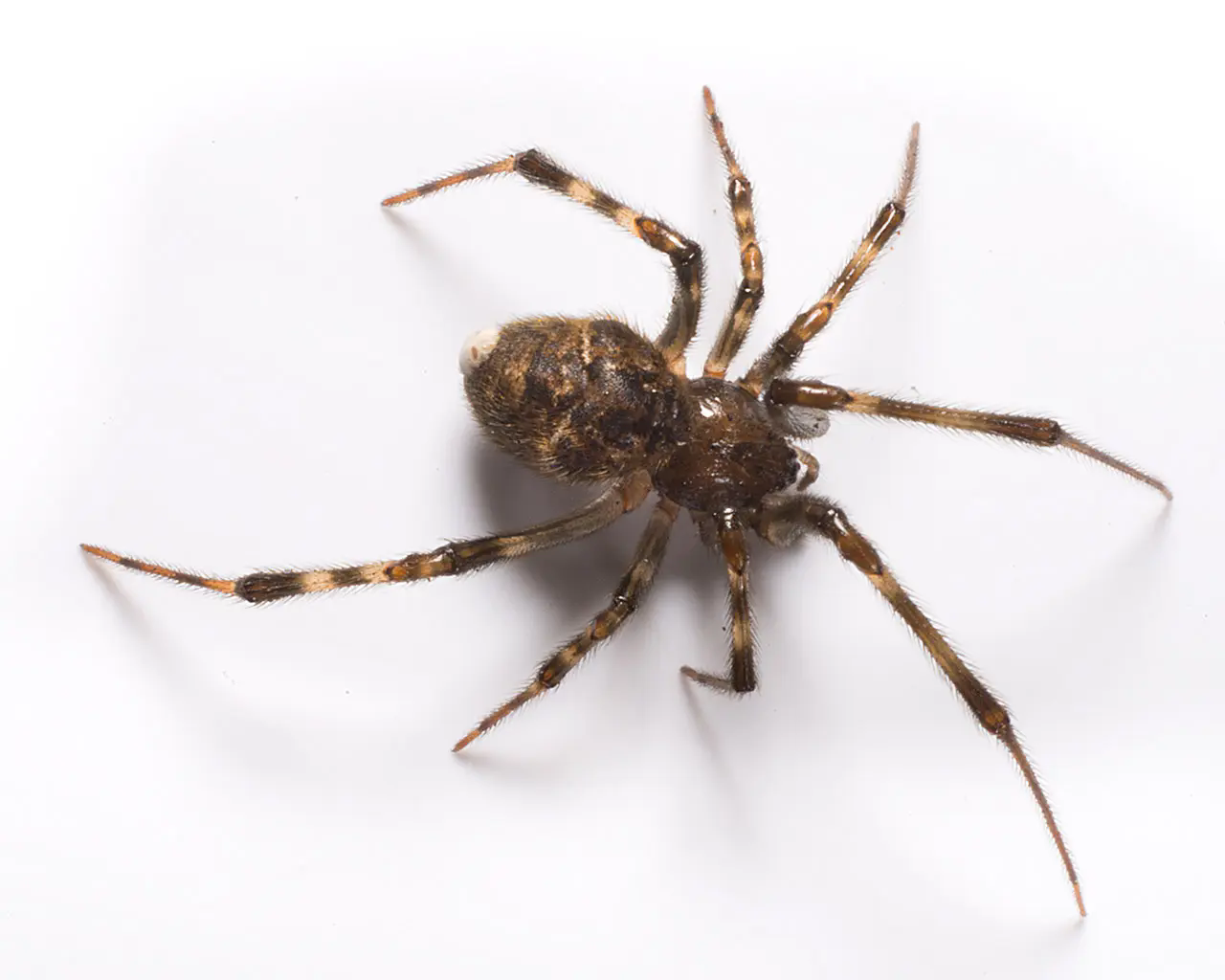
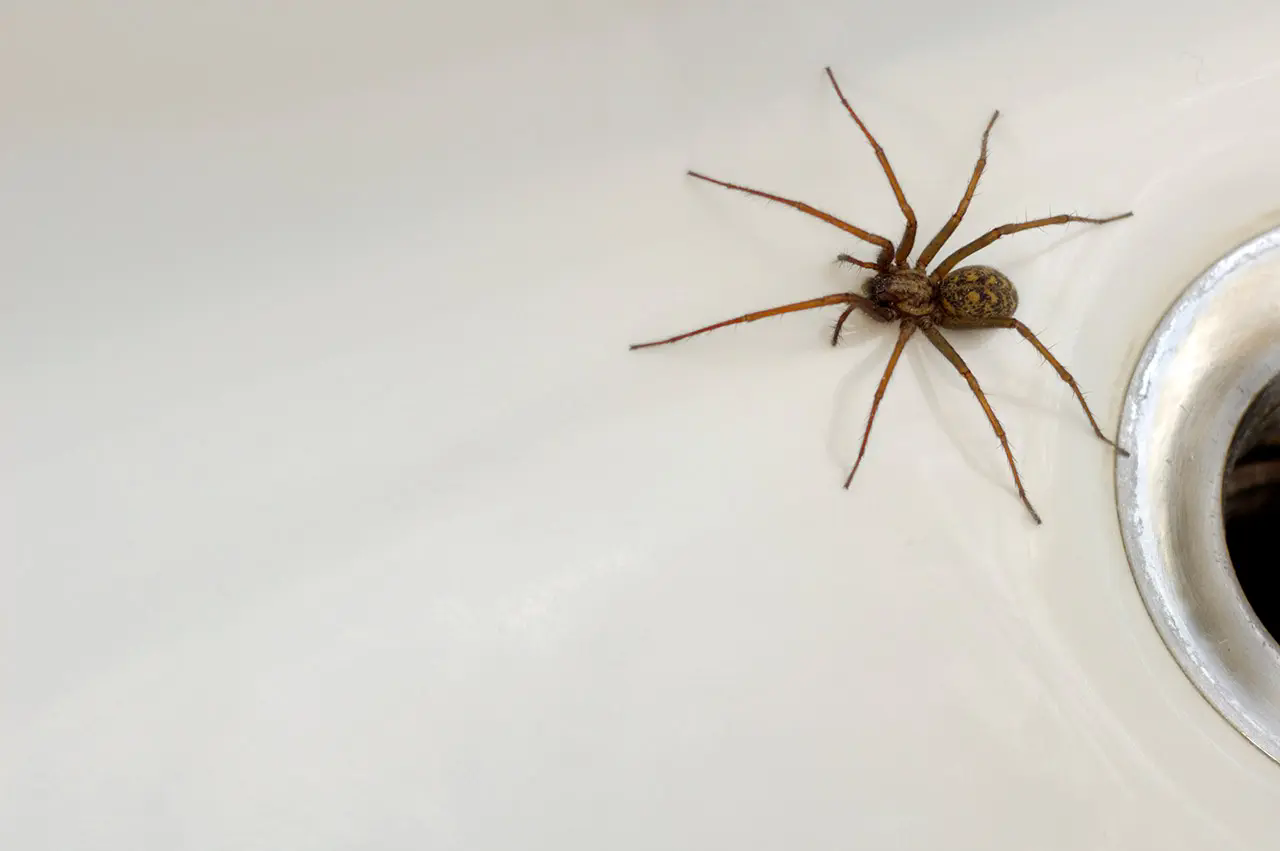
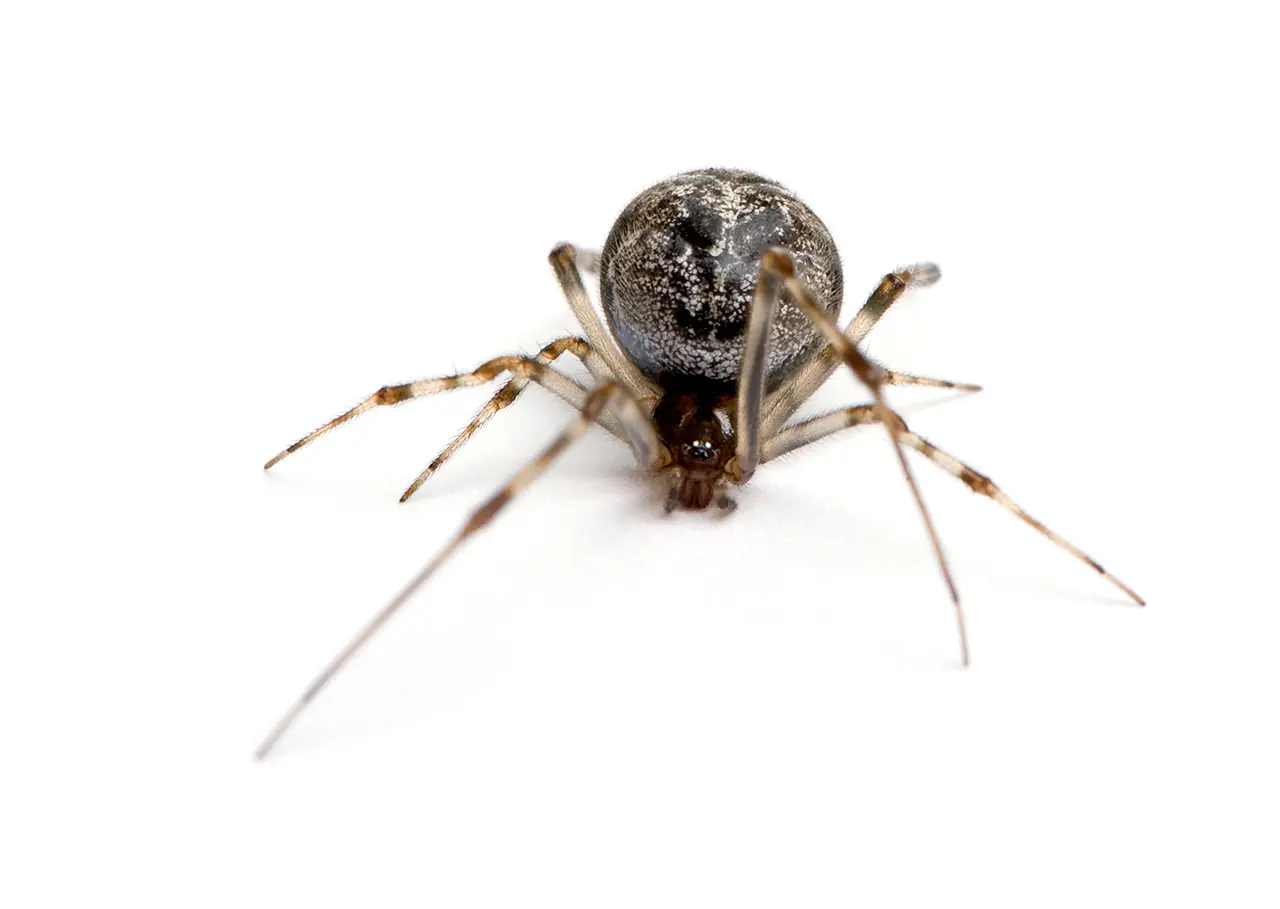
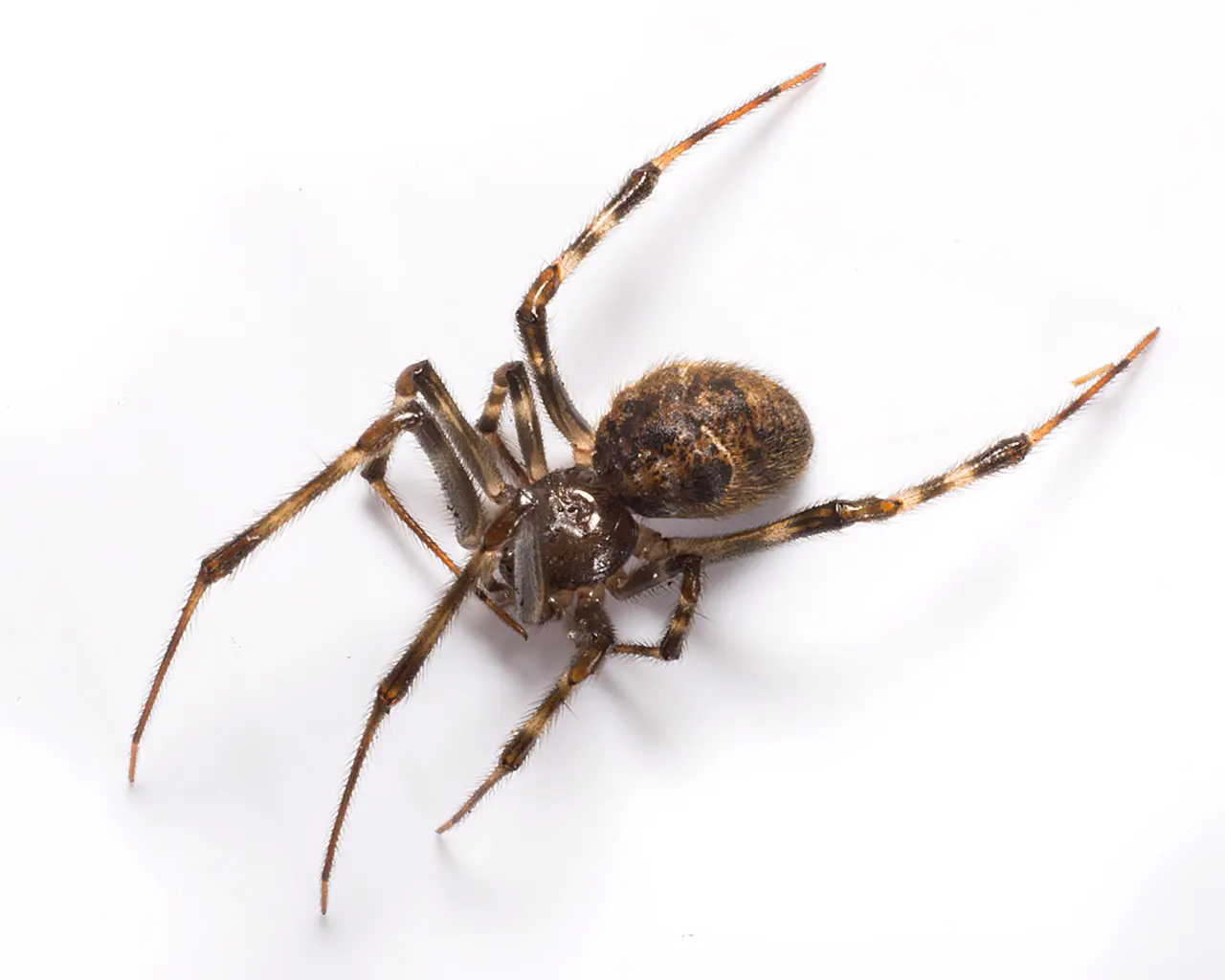
The American house spider (Parasteatoda tepidariorum) is one of the most frequently encountered spiders in homes across the United States.Appearance:
- Small, about the size of a nickel
- Round abdomen
- Usually gray or brown with white markings
- Females slightly larger than males
Behavior:
- Builds messy, tangled webs in corners, under furniture, and other secluded areas
- Primarily active at night
- Feeds on insects and other small pests
Life Cycle & Habitat
American house spiders are found during every season and will mate at any time.
Females produce brown egg sacs that measure between six to nine millimeters in diameter. They will deposit at least 12 of these sacs during their lifetimes. Each sac can contain up to 380 eggs.
This arachnid prefers dark, moist environments. They can be found in basements, crawlspaces, and attics.
You’ll notice that these spiders weave messy, billowy cobwebs that are imitated by Halloween decorations. These webs are what the spiders use to entrap their live prey, usually insects. The spider will then bite its unwitting victim and inject venom, making it easier to digest:
- Prefers dark, concealed areas like basements, attics, closets, and under cabinets
- Often found near windows where they can catch flying insects
Danger level:
Generally harmless to humans. While they can bite if threatened, their venom is not dangerous to most people.
Wolf Spider
Wolf spiders (family Lycosidae) are large, hairy spiders that occasionally enter homes.Appearance:
- Brown, gray, or black with dark markings
- Size varies, but body length ranges from 0.25 to 1 inch
- Distinctive eye arrangement with four small eyes in the front row
Behavior:
- Active hunters that chase down prey rather than building webs
- Excellent night vision
- Some species carry their egg sacs attached to their spinnerets
Habitat:
- Usually found on the ground floor or basement
- May enter homes while hunting prey
Danger level:
Can bite if threatened, but their venom is not considered dangerous to humans. Bites may cause minor pain and swelling.
Brown Recluse Spider
The brown recluse (Loxosceles reclusa) is a spider of concern due to its potentially dangerous bite.Appearance:
- Light to dark brown
- Distinctive violin-shaped marking on the cephalothorax
- Six eyes arranged in three pairs (most spiders have eight eyes)
Behavior:
- Nocturnal and shy, preferring to avoid human contact
- Does not build webs to catch prey
- Can survive long periods without food or water
Habitat:
- Prefers dark, undisturbed areas like closets, attics, and storage spaces
- Often found in cardboard boxes or under unused clothing
Danger level:
Bites can cause serious skin lesions and, in rare cases, systemic symptoms. However, bites are uncommon as the spider is not aggressive.
Daddy Long-Legs Spider
Also known as cellar spiders, daddy long-legs (family Pholcidae) are easily recognizable by their extremely long legs.Appearance:
- Small body with very long, thin legs
- Pale tan to brown coloration
- Some species have patterned abdomens
Behavior:
- Builds loose, irregular webs in corners
- Vibrates rapidly in its web when disturbed
- Feeds on other spiders and insects
Habitat:
- Common in basements, crawl spaces, and garages
- Often found in the corners of ceilings
Danger level:
Contrary to popular myth, daddy long-legs spiders are not dangerously venomous. Their fangs can pierce human skin, but bites are rare and cause only mild, short-lived discomfort.
Hobo Spider
The hobo spider (Eratigena agrestis) is sometimes found in homes, particularly in the Pacific Northwest.Appearance:
- Brown with a distinct herringbone pattern on the abdomen
- 1/4 to 2/3 inch in body length
- Smooth legs without distinct markings
Behavior:
- Builds funnel-shaped webs
- Not aggressive, but may bite if threatened
- Poor vision, which sometimes causes them to run towards perceived threats
Habitat:
- Often found in dark areas like basements and crawl spaces
- May enter homes in search of mates in late summer and early fall
Danger level:
While once thought to be dangerous, current research suggests hobo spider bites are not as harmful as previously believed. Bites may cause pain and other symptoms, but severe reactions are rare.In conclusion, while finding spiders in the home can be unsettling, most common house spiders pose little threat to humans and can actually help control other pest populations. However, it’s always wise to exercise caution and seek medical attention if bitten by any spider, especially if you’re unsure of the species.
Common House Spiders in North America
If you’ve ever spotted a spider scuttling across your living room floor, you’re not alone. North America is home to a variety of house spiders that often find their way indoors. While some folks might get the heebie-jeebies at the sight of these eight-legged critters, most house spiders are harmless and even beneficial. Let’s take a closer look at some of the most common house spiders you might encounter in your home.
American House Spider
The American House Spider (Parasteatoda tepidariorum), also known as the common house spider, is a frequent guest in homes across North America. These spiders are small, usually about the size of a nickel, and have a round abdomen. Their color ranges from gray to brown with some white markings. They love dark, concealed areas like corners, basements, and garages, where they spin their tangled, messy webs to catch insects like flies and mosquitoes.
Southern House Spider
Southern House Spiders (Kukulcania hibernalis) are often mistaken for other spiders due to their appearance. Females have round, dark bodies that can resemble small tarantulas, while males have a distinctive violin-shaped marking that can be confused with the brown recluse spider. Despite their somewhat intimidating look, these spiders are harmless and prefer to stay out of sight in dark, undisturbed places like shutters, windowsills, and under stones.
Domestic House Spider
The Domestic House Spider (Tegenaria domestica) is another common arachnid that shares living spaces with humans. These spiders are typically brown with pale or black stripes and prefer dark, dry crevices within homes. They’re often found in cupboards, behind furniture, and in attics and basements. While they can bite if threatened, their bites are generally not dangerous, causing only mild pain, itching, and swelling.
Cellar Spider
Cellar Spiders, often called “daddy longlegs,” come in both short-bodied and long-bodied varieties. These spiders are known for their incredibly long, thin legs and are often found in dark, moist environments like basements and garages. Despite their scary appearance and urban legends, cellar spiders are harmless to humans. They can’t even pierce human skin with their jaws.
Jumping Spider
Jumping Spiders, from the family Salticidae, are fascinating for their exceptional jumping ability and keen vision. These compact spiders are usually black, but can also be tan, gray, or brown, often adorned with colorful markings. They are active during the day and prefer to hunt their prey by jumping on them rather than spinning webs. Their excellent vision allows them to detect movement up to 18 inches away.
Brown Recluse Spider
The Brown Recluse Spider (Loxosceles reclusa) is one of the few spiders in North America whose bite can cause significant harm. Identifiable by a violin-shaped marking on its back, this spider prefers undisturbed areas like basements, closets, and sheds. While bites are rare, they can cause serious damage to the skin and tissues, so it’s important to seek medical attention if you suspect a brown recluse bite.
Wolf Spider
Wolf Spiders are robust and agile hunters that don’t rely on webs to catch their prey. Instead, they chase down their victims. These spiders are usually brown with a distinctive pattern on their backs and are often found in basements, garages, and around windows. While their appearance can be startling, wolf spiders are not aggressive and their bites are not dangerous to humans.
Orb Weaver
Orb Weavers, from the family Araneidae, are known for their intricate, spiraling webs. These spiders vary greatly in color, shape, and size, and are often found in gardens, around porch lights, and under eaves. Their webs are a marvel of natural engineering, designed to efficiently capture flying insects. Orb weavers are not harmful to humans and are beneficial for controlling pest populations.
Grass Spider
Grass Spiders, also known as funnel-web spiders, build dense, silk-lined webs to trap their prey. These spiders are often yellow, brown, or cream-colored with dark bands running across their bodies. They are common in grassy areas and around windowsills. Grass spiders are shy and not aggressive, and their bites are not harmful to humans.
Hobo Spider
Hobo Spiders have a reputation for being aggressive, but this is largely unfounded. They have an oblong abdomen and are often found in moist, dark areas like basements and garages. While they will bite if provoked, their bites typically cause only mild pain and redness. The hobo spider has been removed from the CDC’s list of dangerous spiders.
How can I prevent house spiders from entering my home
Keeping house spiders out of your home can be a bit of a challenge, but with a few simple steps, you can make your living space less inviting to these eight-legged critters. Here are some effective and natural methods to prevent spiders from entering your home:
1. Seal Cracks and Gaps
Spiders often enter homes through small cracks and gaps in doors, windows, and walls. To keep them out, inspect your home for any potential entry points and seal them with caulk or weatherstripping. Pay special attention to areas around windows, doors, and any utility openings like pipes and cables.
2. Keep Your Home Clean
Spiders love cluttered and dusty areas where they can hide and build webs. Keeping your home clean and tidy can make it less attractive to spiders. Regularly vacuum and dust, focusing on corners, baseboards, and behind furniture. Don’t forget to clean up any spider webs you find, as this can discourage them from staying.
3. Remove Food Sources
Spiders are often drawn indoors by the presence of other insects, which serve as their food. To reduce the number of insects in your home, keep food sealed in airtight containers, take out the trash regularly, and fix any leaky faucets to eliminate water sources that attract bugs.
4. Use Natural Repellents
Several natural substances can deter spiders:
- Peppermint Oil: Spiders dislike the strong smell of peppermint. Mix a few drops of peppermint essential oil with water in a spray bottle and spray it around windows, doors, and other entry points.
- Vinegar: Mix equal parts white vinegar and water in a spray bottle and apply it to areas where spiders are likely to enter or build webs. The strong smell of vinegar repels spiders.
- Citrus: Spiders also dislike citrus scents. Rub lemon, lime, or orange peels along windowsills, door frames, and other entry points. You can also use lemon-scented cleaners or burn citronella candles.
5. Reduce Outdoor Lighting
While spiders are not attracted to light, the insects they feed on are. Reducing outdoor lighting or using yellow sodium vapor lights can help keep insects—and consequently spiders—away from your home.
6. Declutter and Organize
Spiders thrive in cluttered environments. Keep your home organized and free of unnecessary piles of newspapers, boxes, and other items that can provide hiding spots. Regularly clean and declutter storage areas, basements, and attics.
7. Use Spider Deterrent Products
If natural methods aren’t enough, consider using commercial spider deterrent products. There are various options available, such as spider repellent sprays and pouches that can be placed around your home to keep spiders at bay.
8. Maintain Your Yard
Spiders often make their way indoors from your yard. Keep the area around your home free of debris, leaves, and woodpiles where spiders can hide. Trim back any vegetation that touches your house, as this can provide a bridge for spiders to enter.By following these tips, you can significantly reduce the likelihood of spiders making themselves at home in your house. Remember, a combination of cleanliness, sealing entry points, and using natural repellents can go a long way in keeping your home spider-free.
While the thought of spiders might make your skin crawl, most house spiders in North America are harmless and even helpful in controlling other pests. So next time you see a spider in your home, remember that they’re just doing their part to keep the insect population in check. If you really can’t stand their company, there are plenty of humane ways to encourage them to move along without causing harm.
